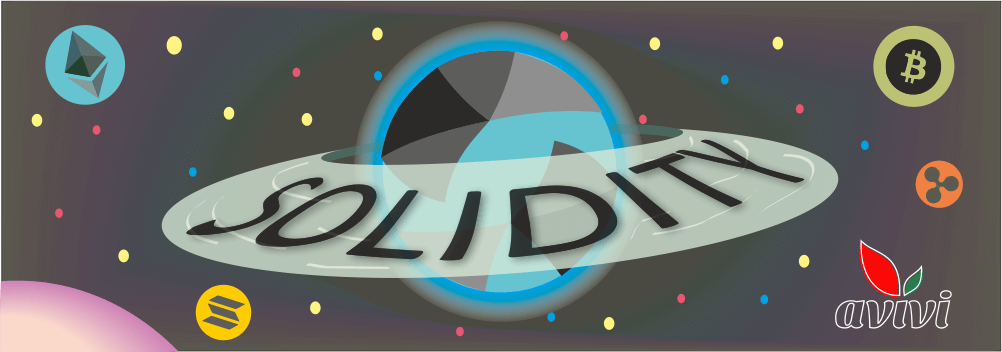What do you need to know about blockchain in order to fully trust smart contracts?
12 July 2022
next article
If you have already dealt with cryptocurrencies, you definitely know about the high degree of security of operations and complete anonymity for users. In fact, this is not just words or some marketing ploy: blockchain technology really works in such a way that it is almost impossible to change something or fake it here. In theory, for this you need to have unprecedented resources for calculations, which in total outweigh all the available capacities of all miners on the planet, or to sway more than half of all participants in this process to your side, which is also impossible. Let's find out what these features are and why smart contracts created on the blockchain can be trusted as if they were themselves.
Not just encryption
Humanity knows many methods of encryption, that is, protecting information from intruders in a certain way. Ciphers are simple enough that even children can use them, and there are also extremely complex ones that create difficulties even for powerful computers. However, the purpose of any encryption is to protect the data and make it usable by those who have the appropriate encryption keys — that is, the instructions by which the encoded information can be transformed into its original state. And if the blockchain worked only on the basis of perfect encryption, then it would be dishonest to talk about unbreakable security. After all, every day someone creates a better mouse, but others can make a better mousetrap. Here is the main meaning of any encryption:

But the blockchain logic is more complex than we think, and the methods used are also more sophisticated. That is why we have a part of the word "crypto", which means "hidden" from the Greek, and not just "ciphered". That is why the creators of the blockchain tried to find an alternative method of processing information so that no person could affect the overall process. After all, this is the only way to make it completely decentralized, democratic and independent. The task is not simple, but, as it turned out, it is quite feasible.
His majesty, hash
Such a concept as a hash was known long before the appearance of the first cryptocurrencies. For example, by comparing the hash sums of information packets, software providers made it possible to make sure that no hacker made changes to the programs on the way to the user. Also, most of our passwords are stored by services in the form of a hash — a string of characters of a fixed length — and therefore cannot be used by attackers even if they are stolen.
So how does it work? If it is very simple, then any entry in the blockchain is converted into a hash. Its main feature is a one-way conversion, that is, there are no methods that will convert the hash term into the information from which it was created. It doesn't matter whether you need to encode the number "1" or the word "Floccinaucinihilipilification" — as a result, you will get a fixed hash length of 80 or 120 digits. And in the event of a change of even one character in the source information, the hash will be completely transformed. This is what the hash of our company name looks like in different methods:

Each of the participants of the blockchain receives the same hash-encoded information regarding transactions within the system. So even if someone figures out how and makes adjustments to their copy, most will remain unchanged, and so the blockchain will recognize the modified version as unusable and rewrite it as appropriate. To do this, in addition to encryption, coded information with the identifier of the previous block is also added to the hash, which creates a continuous layering of information in the correct order. Hence the name Blockchain — a chain of consecutive blocks.
Are there options to hack the blockchain?
It is possible to damage the blockchain only in theory. As we have already said, one of the options is to acquire resources that exceed the capabilities of miners from around the world. This should directly include the power of all computers, video cards and other devices that continuously support blockchain calculations, and all the electricity that is spent on it. Then it is theoretically possible to calculate the Proof of Work for the not-yet-completed cycle and replace all the records in the world with the ones we need. But, as you can see, it is extremely difficult to do this, and it is beyond the power of individual people, corporations, and even superpowers to collect such a resource.

Another way also exists only in theory and relies on ordinary human honesty. The creators of the blockchain were convinced that the majority of users are, after all, honest people and will not join a sinister conspiracy. Since the blockchain cuts out individual instances of inconsistency and focuses on the majority, the only way to fool it is to falsify the majority of records at once. This is called the “51% attack”, but it is also not possible in practice: for this, you need to agree with the majority of blockchain users, coordinate the time, and most importantly, generate and send the necessary hash to everyone. And since everything is anonymous in the blockchain, it is impossible to calculate the participants.
Now you see that it is simply impossible to forge a blockchain-based smart contract. Therefore, security is the last thing you should worry about when entering into an electronic contract. No attacker will be able to change anything in the agreement signed once. So don't delay: contact Avivi specialists and start using smart contracts today!
We will reach out to within 10 minutes



